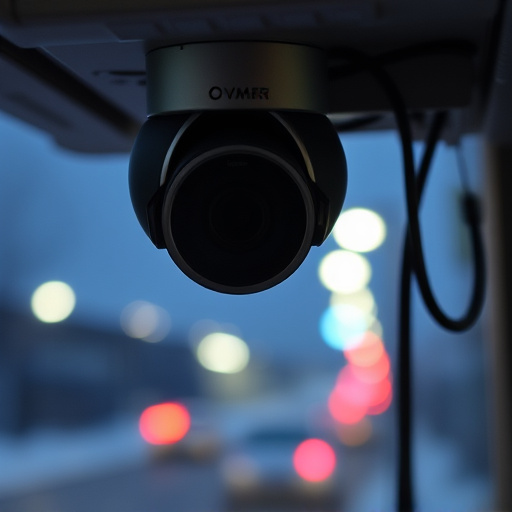Using "nanny cams" disguised as everyday household items for surveillance can be legal with consent, but without authorization, it's a privacy breach and may incur severe penalties. These cameras offer discrete home security through objects like bookends or kitchen gadgets, but advanced detection methods, including metal detectors and thermal imaging, can uncover them. Ideal placement is in high-traffic areas like kitchens, and ethical considerations regarding transparency and trust are vital to balance security and privacy rights.
In an era of heightened privacy concerns, understanding the legal boundaries of covert recording is crucial. This article offers a comprehensive guide to navigating the complexities of hidden cameras, particularly focusing on creative placement techniques for nanny cams disguised as everyday household items. From advanced detection methods to ethical considerations, we explore strategic equipment positioning while building trust in surveillance practices. Discover how to ensure peace of mind without infringing on privacy rights, leveraging innovative solutions like nanny cams masked as familiar objects.
- Understanding the Legalities of Covert Recording: A Comprehensive Overview
- Nanny Cam Disguised as Household Items: Creative Placement Techniques
- Advanced Detection Methods for Unsuspecting Observers
- Common Areas for Strategic Equipment Positioning
- Ethical Considerations and Building Trust in Surveillance Practices
Understanding the Legalities of Covert Recording: A Comprehensive Overview
In many jurisdictions, covert recording, also known as hidden camera surveillance, is a delicate legal matter. While it can be a powerful tool for maintaining security and catching wrongdoers, it must be approached with caution to avoid infringing on privacy rights. The legality of such recordings often depends on specific regulations within each country or region, which vary widely.
One common scenario involves using a “nanny cam,” a disguised camera designed to look like everyday household items. These devices are legally employed in many places when used with explicit consent from all parties involved. However, without proper authorization, covertly recording someone without their knowledge can constitute a serious breach of privacy and may result in severe legal consequences, including fines or imprisonment. It is essential to understand the local laws before considering the placement of any hidden cameras.
Nanny Cam Disguised as Household Items: Creative Placement Techniques
Nanny cams disguised as household items have become a creative and effective way to ensure safety and surveillance. By integrating these devices into everyday objects, they remain hidden from view, making it impossible for potential intruders or malicious individuals to anticipate their presence. From fake electrical outlets to artistic sculptures, the options for placement are endless. A cleverly placed nanny cam in the form of a decorative bookend can keep an eye on activity in a study while appearing harmlessly innocuous. Similarly, a hidden camera disguised as a common kitchen gadget could monitor food preparation areas without raising suspicion.
This innovative approach to surveillance technology leverages the natural tendency to trust familiar objects in the home, allowing for discreet observation and recording. Creative placement techniques not only ensure the safety of loved ones but also provide peace of mind, knowing that important moments are captured without compromising privacy or aesthetics.
Advanced Detection Methods for Unsuspecting Observers
In today’s digital era, advanced detection methods have emerged to counter covert recording equipment, particularly the ubiquitous nanny cam disguised as household items. One such method involves utilizing specialized metal detectors and RF (radio frequency) analyzers to identify hidden cameras, which often transmit data wirelessly. These tools can help uncover devices placed in seemingly innocent objects like clocks, light switches, or even fake fire alarms—all common disguises for nanny cams.
Additionally, thermal imaging cameras have proven effective in detecting heat signatures associated with electronic devices, making it possible to spot hidden cameras that might be camouflaged within a room’s environment. By combining these advanced detection techniques, professionals can navigate and safeguard against the subtle yet insidious presence of covert recording equipment, ensuring privacy for unsuspecting observers.
Common Areas for Strategic Equipment Positioning
In the quest for covert recording, strategic equipment placement is key. Common areas for positioning include high-traffic zones like kitchens and living rooms, where conversations are likely to occur and activities are often unguarded. Disguised as everyday household items such as smoke detectors, clock radios, or even fake fire extinguishers, Nanny Cams offer a discreet solution for surveillance needs. These hidden cameras allow for unobtrusive monitoring, making them ideal for situations requiring long-term observation without raising suspicion.
Ethical Considerations and Building Trust in Surveillance Practices
When considering covert recording equipment placement, one of the primary concerns revolves around ethical boundaries and maintaining trust within surveillance practices. The use of Nanny Cam Disguised as Household Items raises important questions about privacy rights and consent. As technology advances, making it easier to secretly record individuals, it becomes increasingly vital to establish clear guidelines for its implementation.
Surveillance methods should prioritize respect for personal privacy while addressing legitimate security concerns. Using hidden cameras as nannies or in-home assistants can create a sense of unease among residents, eroding trust if not properly disclosed and regulated. Building trust requires transparency about surveillance measures, ensuring individuals are aware of potential recordings and their rights regarding data protection.
In the realm of covert recording, understanding legal boundaries is paramount. While the strategic placement of Nanny Cams disguised as household items offers valuable insights for enhanced security and peace of mind, ethical considerations must guide these practices. Building trust through transparency and respecting privacy rights ensures that advanced detection methods serve their purpose without causing harm. By navigating these aspects, individuals can leverage technology responsibly, creating a safer environment while adhering to legal guidelines.
